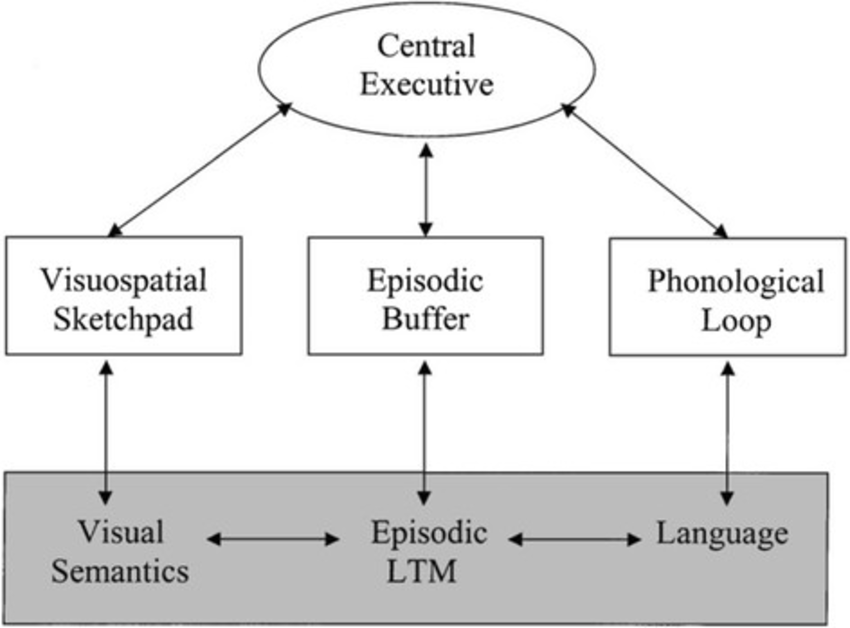the working memory model
1/5
There's no tags or description
Looks like no tags are added yet.
Name | Mastery | Learn | Test | Matching | Spaced |
|---|
No study sessions yet.
6 Terms
the working memory model
•developed by Baddeley & Hitch (1974) offers a more complex explanation of STM than the multi-store model
•
•An explanation of how STM is organised and how it functions.
•Baddelely and Hitch suggest that STM is made up of several subsystems, each having a specialised function.
•
•The working memory model also emphasises memory processes rather than structure
•
•The model explains only STM not LTM.
•
The model consists of four components, each of which is qualitatively different especially in terms of capacity and coding

subsystems in STM
visuo-spatial sketchpad
phonological loop
episodic buffer
central executive
•supervises and coordinates these subsystems and decides which information is attended to.
•Monitors incoming data, makes decisions and allocates slave systems to tasks.
•The central executive has very limited processing capacity.
visuo-spatial sketchpad
-Stores visual and/or spatial information when required
-Deals with what information looks like and how it is laid out. (visual data = visual cache)
-Deals with visual and spatial information. (arrangement of objects in the visual field = inner scribe)
phonological loop
-Auditory information (coding is acoustic)
-Holds spoken information for about 1.5 to 2 seconds. (words you hear = the phonological store)
-Written words have to be converted to spoken words before they can enter the phonological loop (articulatory process = maintenance rehearsal).
episodic buffer
A temporary store integrating visual, verbal and spatial information in one place.
- Has a limited capacity (4 chunks)
- Links working memory to LTM.
-The episodic buffer was added to
Baddeley’s original model in 2000.